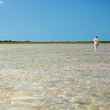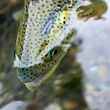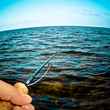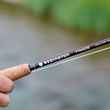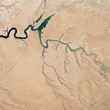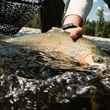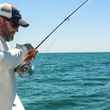As spring rains in the Rockies push lowland creeks and streams out of their grassy banks and stain the water just a bit, smart anglers will disregard the disdain many fly fishers hold for a particular fly pattern and they’ll happily catch trout, because this fly does, indeed, match the hatch.
Aquatic worms dwell in the moist and muddy banks along bottomland springs and streams, and when water rises, these worms—not unlike the ones you used to dig up in grandma’s garden before heading off to fish as a kid—end up in the water. And the trout love them.



